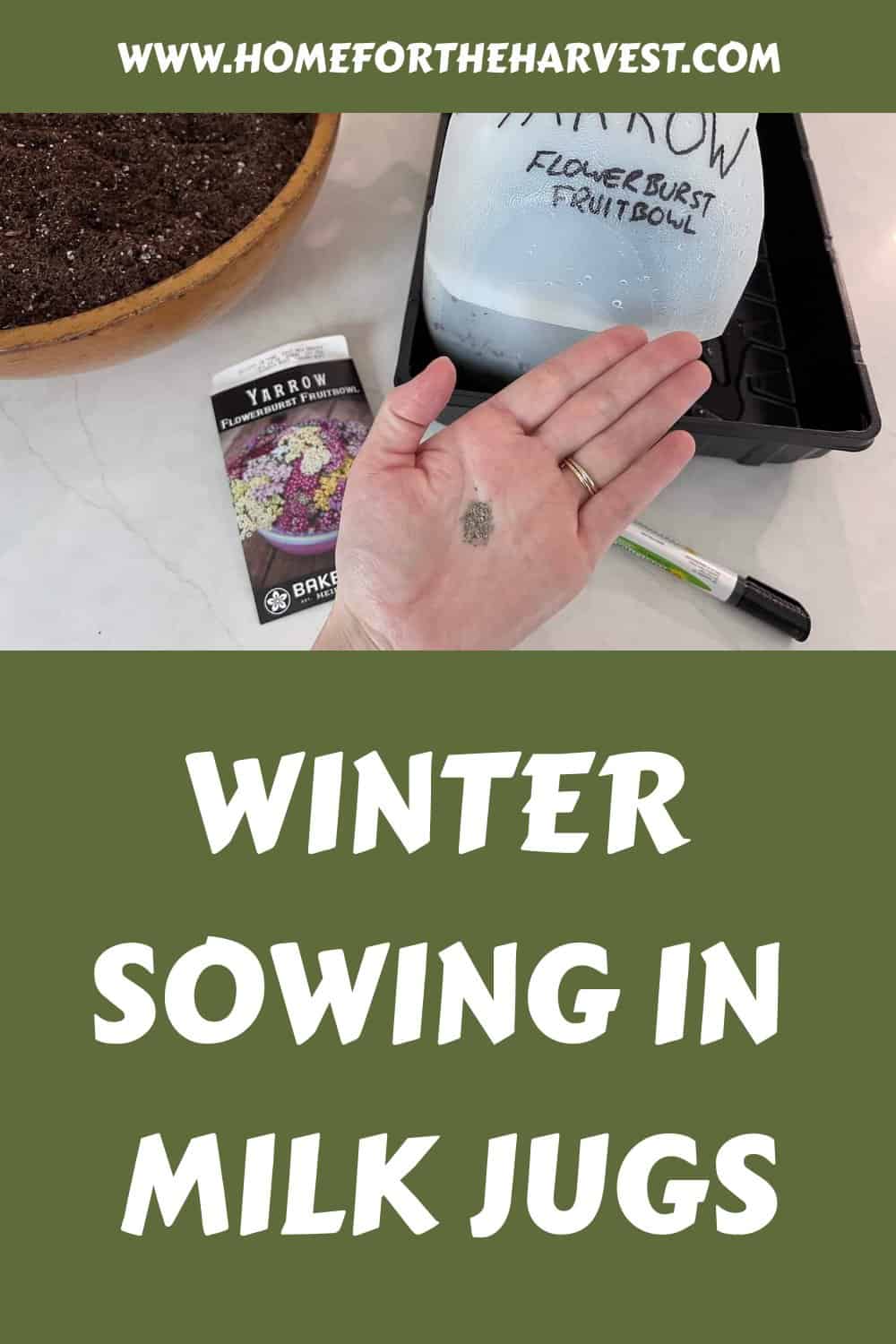Are you looking for a way to start your spring gardening early? Winter sowing in milk jugs is an easy and inexpensive way to get ahead of the season. By planting cold-hardy seeds in potting mix inside cut-in-half milk jugs from December through March, you can have plants ready for transplanting come springtime!
The benefits are numerous, but winter sowing does require some preparation before getting started. Learn more about what it takes to successfully winter sow using this simple method below!
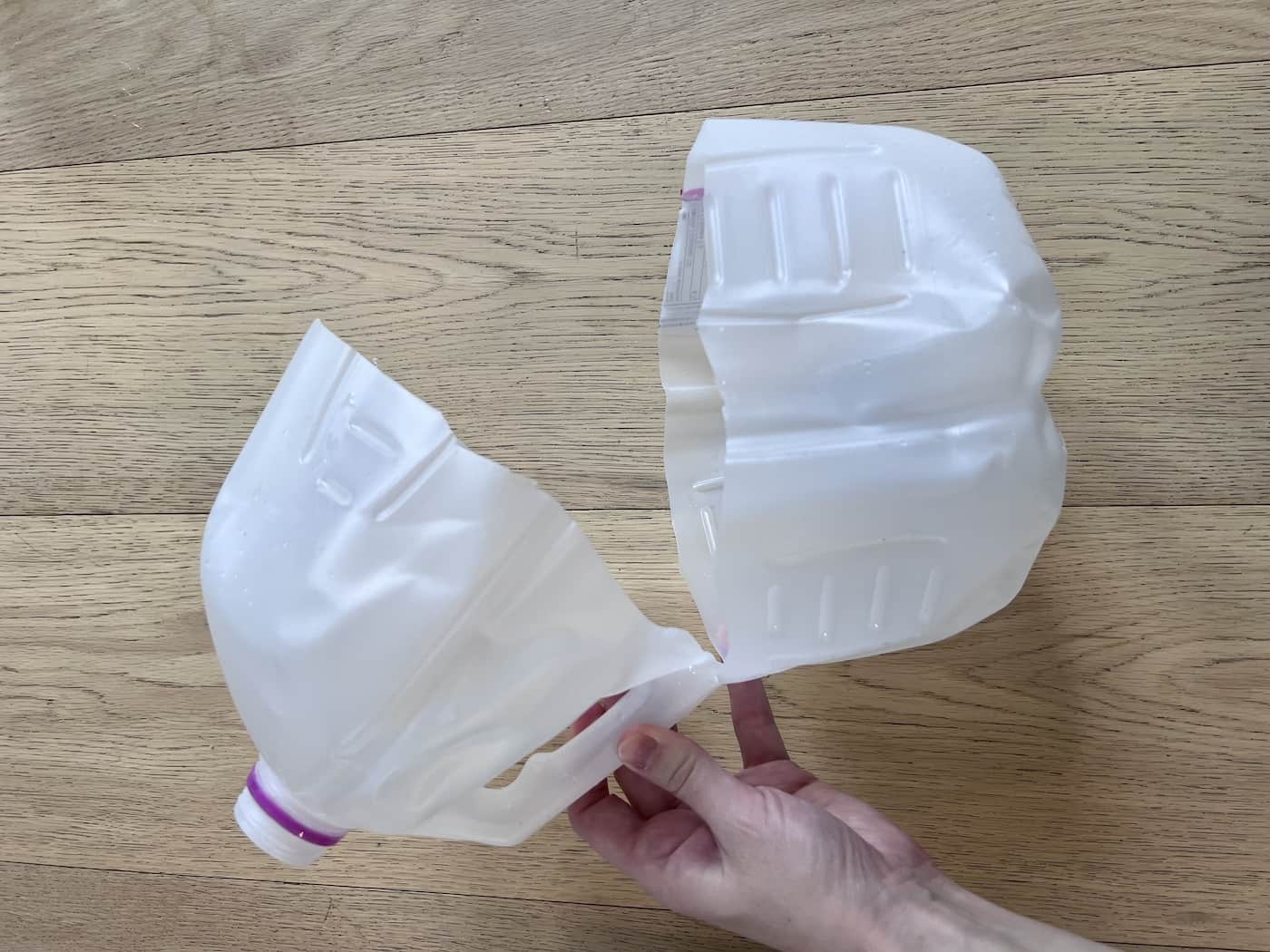
Winter sowing in milk jugs
Winter sowing is a method of planting cold-hardy seeds in potting mix inside a milk jug that has been cut in half. This method allows you to plant the seeds in winter (Dec-March), and then they sprout in spring as they would in nature. It’s an easy way for gardeners who don’t have access to greenhouses or other specialized equipment to get their plants started early.
The process begins by cutting the top off of a plastic milk jug, leaving about 4 inches from the bottom so it can hold soil and water. You’ll also want to cut some drainage holes in the bottom.
The milk jug should be filled with potting mix and lightly watered before adding your chosen seed varieties. Once all the seeds are planted, place the lid back on top of the jug, making sure there are some holes punched into it for air circulation. Then place them outside where temperatures will stay cold during winter months – this could be anywhere from your backyard to an unheated garage or shed.
When spring arrives, keep an eye out for signs of growth, such as leaves poking through the soil surface or small shoots emerging from beneath it. If you notice any wilted plants due to lack of sunlight or too much rain, try them in a more appropriate location. As soon as temperatures remain consistently above 50°F at night, transplanting can usually begin.
Winter sowing is great because it eliminates many steps associated with traditional gardening methods; no need for starting trays indoors under grow lights or hardening off young seedlings before putting them out into their permanent home. Plus, since jugs act as mini greenhouses once placed outdoors by keeping heat trapped inside while still allowing moisture evaporation, the seed germination rates tend to be higher than if you were planting directly into ground soil right away without protection against cold weather extremes first.
Winter sowing is a great way to get a jump start on your garden in the winter months and reap the rewards of healthy plants come spring. Let’s look at some of the benefits of this method next.
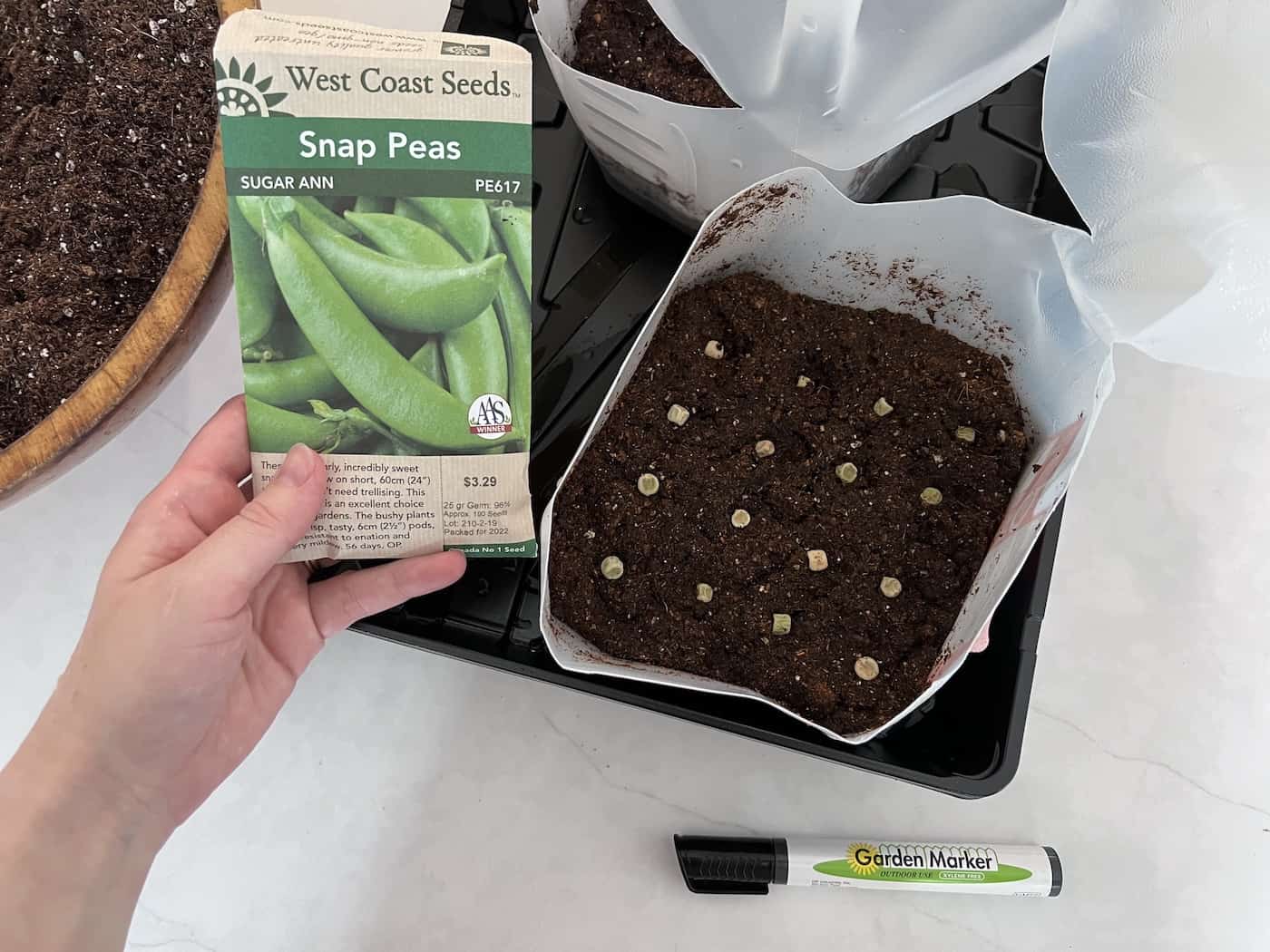
Benefits of winter sowing
Winter sowing is a great way to get your garden started earlier than usual. By planting seeds in milk jugs, you can start growing plants before the last frost of spring and have them ready for transplanting when the weather warms up. This method also saves money on expensive seedlings since you’re starting from scratch with just a few seeds.
One of the biggest benefits of winter sowing is that it reduces the amount of time spent setting up and caring for an indoor seed starting station. And if you don’t have the space to do that anyways, winter sowing with old milk jugs is a total lifesaver.
Another advantage of winter sowing is that it helps reduce the risk of disease and pests since you’re not bringing in transplants from another location which could introduce new problems into your garden space. Starting with just a few seeds means that any potential diseases or pests will be limited to those already present in your soil rather than introducing something entirely new into the environment which could cause more harm than good down the line.
Finally, winter sowing gives you greater control over what types of plants end up in your garden beds as well as how they look once they reach maturity. You can choose exactly which type of flowers or vegetables you want based on their size, color, flavor profile etc., so that everything looks cohesive and unified when all is said and done.
Winter sowing is an easy and efficient way to get a jump start on your garden in the spring, with minimal effort. Now let’s look at how to prepare milk jugs for winter sowing.
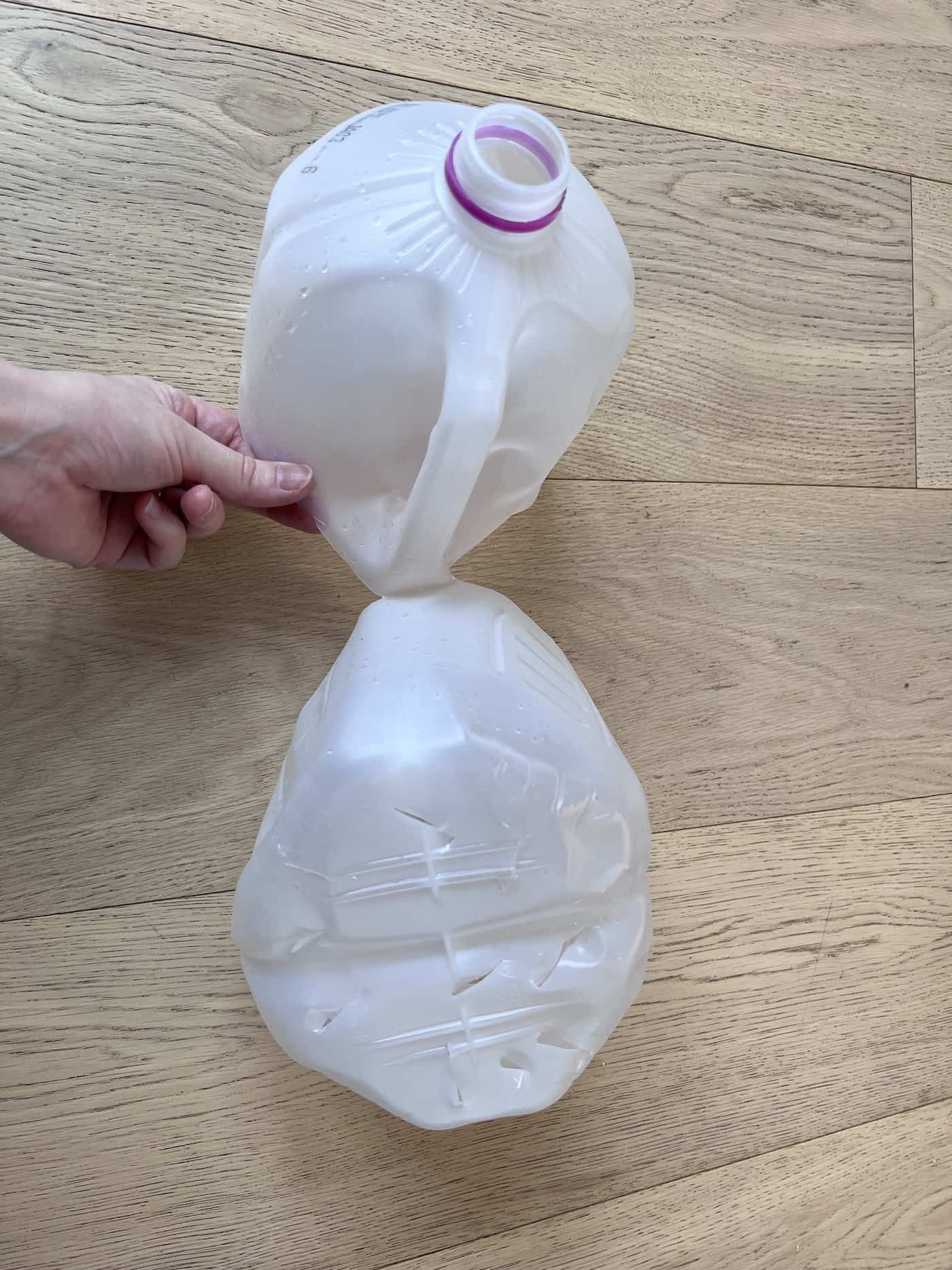
How to prepare milk jugs for winter sowing?
Milk jug winter sowing is an easy and inexpensive way to plant seeds outdoors during the winter months when it’s too cold for traditional gardening methods. To prepare milk jugs for winter sowing, you’ll need scissors or a utility knife, potting mix, cold-hardy seeds, and tape or rubber bands.
Before planting, make sure to thoroughly clean out the inside of each jug with warm soapy water. This will help prevent any bacteria or mold from forming on the surface of the soil once it’s wet. You can also recycle the cap.
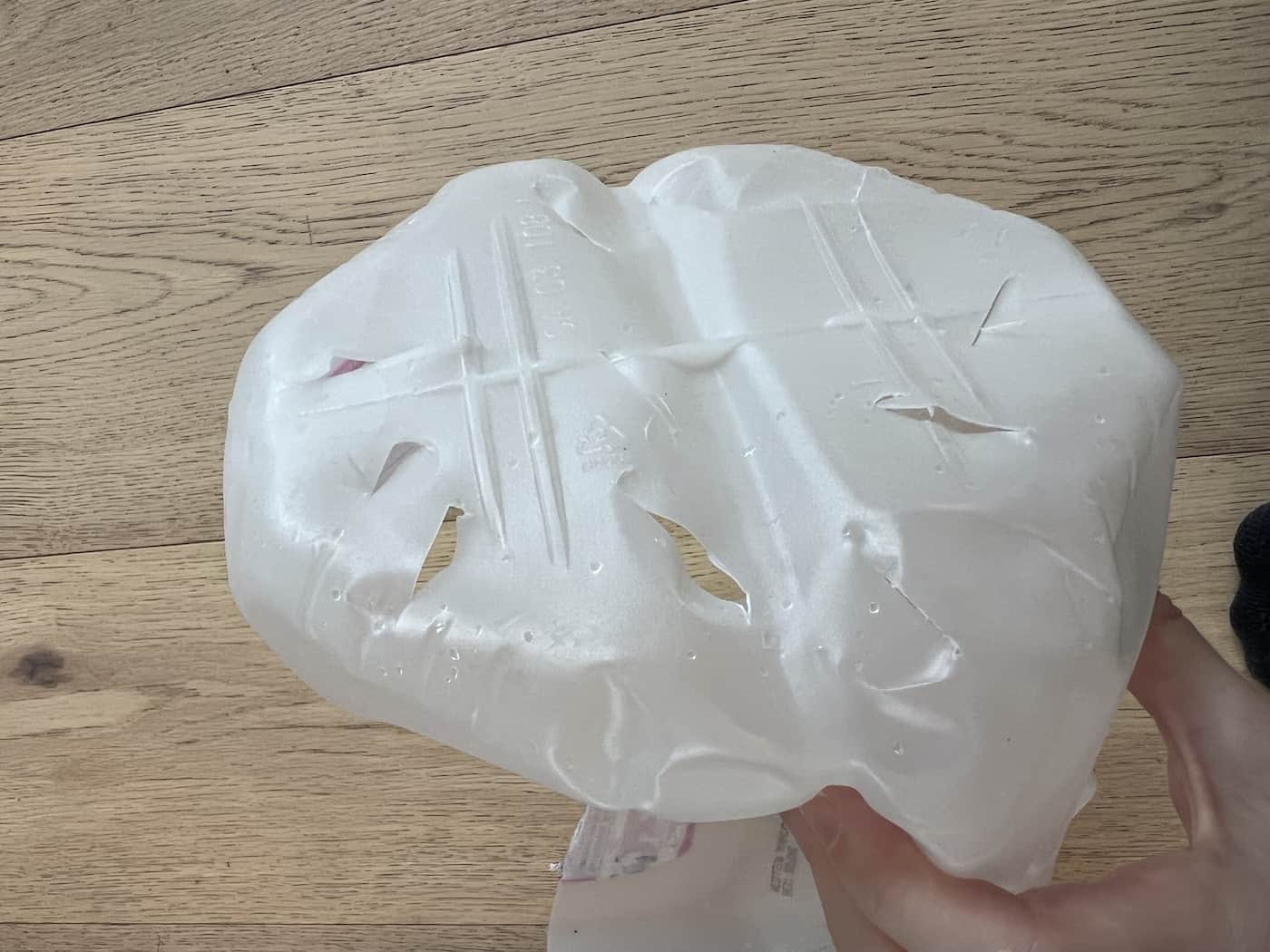
Start by cutting off the top half or third of each jug with scissors or a utility knife. Leave a little connecting bit of plastic at the base of the handle. This cut will create an opening that allows air and light into the container while protecting your plants from extreme temperatures. While you’re at it, cut some drainage holes in the bottom so excess water can drip out.
Next, fill each jug with potting mix until it’s about two-thirds full. Make sure to pack down the soil firmly so that there are no air pockets where water can collect and freeze during cold weather conditions. You can water the soil lightly to help compress it and to check that the drainage holes are working.
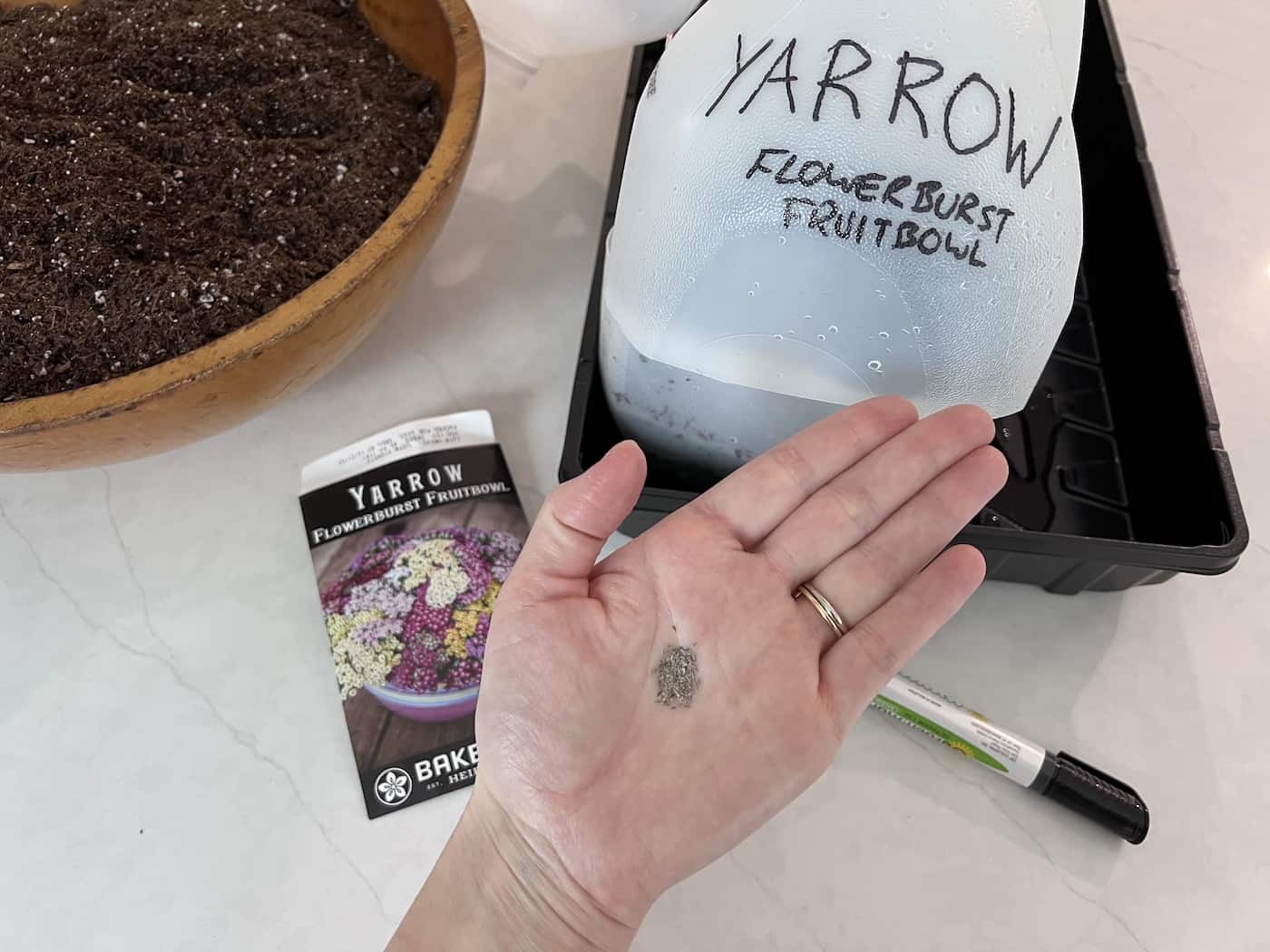
Planting seeds in the milk jug flats
Now you’re ready to plant. Place your seeds at least an inch apart so that they have enough room to grow once they sprout up. Water them lightly after planting and place them outside where they will get plenty of sunlight and rain throughout the winter months – no need for additional watering.
Now it’s time to add your seeds. Place your cold-hardy seeds on top of the soil and cover them lightly with more potting mix before sealing up the jugs with tape or rubber bands. This helps keep moisture in while still allowing some airflow around your plants as they grow throughout winter months into early springtime blooms.
Finally, place all of your prepared containers outside in direct sunlight where they will be exposed to rainwater naturally over time. This helps ensure healthy growth without having to worry about manual watering every day as you would indoors. Don’t tuck them under a roofline where they won’t get light and precipitation.
Once planted correctly using these steps above, all that is left to do is wait patiently for those beautiful sprouts to come in springtime. With proper care such as keeping weeds away from young seedlings and providing adequate shade if necessary (especially during hot summer days), you will soon be enjoying gorgeous flowers from these little milk jug planters.
Caring for your plants after sprouting
When spring arrives, keep an eye on how quickly your seedlings are growing; if their roots become too crowded in their containers then transplant them into larger pots or directly into the ground outdoors (if weather permits).
Watering is key – make sure you give them enough water so that the soil stays moist but not soggy. If you notice any wilting or yellowing of leaves, this could be a sign that they need more water. You can also fertilize your plants with an all-purpose fertilizer once every two weeks to help encourage healthy growth and blooming.
Sunlight is also important for your seedlings. Place them in a spot where they will get at least 6 hours of direct sunlight each day. This will help promote strong root development and lush foliage growth as well as flowering if applicable. Make sure to rotate the containers occasionally so that all sides receive equal amounts of sun exposure throughout the day.
When it comes to pruning, wait until after your plants have flowered before doing any trimming or deadheading (removing spent flowers). Pruning too early can reduce flower production later on in the season and may even stunt their overall growth rate.
Finally, watch out for pests such as aphids, caterpillars, slugs, snails, and other insects that may try to feed on your seedlings. Keep an eye out for signs of damage, such as holes in leaves or discoloration due to sap-sucking bugs like aphids – these are easy indicators that something might be wrong with one of your plants. If you do find pests on any of your seedlings, use natural approaches neem oil spray or insecticidal soap rather than chemical pesticides whenever possible.
By following these simple steps when caring for winter-sown seedlings, you should have no problem keeping them happy and healthy throughout their growing season.
FAQs about winter sowing with milk jugs
When should I start winter sowing in milk jugs?
Winter sowing in milk jugs is a great way to get a jump start on your gardening season. The best time to start winter sowing is typically mid-winter when temperatures are consistently below freezing and the ground has frozen solid. You should wait until after the first hard freeze of the year before you begin planting seeds in milk jugs. Most gardeners do their winter sowing between Christmas and St. Patrick’s Day.
How do you prepare milk jugs for winter sowing?
To prepare milk jugs for winter sowing, you will need to clean them thoroughly. Remove the cap and recycle it. Then cut a line around the middle of the container, as if it were halfway full of milk. You can leave a little “hinge” at the handle to help keep the halves together. Lastly, punch some drainage holes in the bottom.
What seeds can you start in milk jugs?
You can generally plant any seeds that are cold-hardy and won’t die if they freeze and thaw. Usually, this means seeds for perennial plants that survive winter in your area. You can also successfully winter sow self-sowing annuals that tend to seed themselves reliably in your climate.
Before you go…
It’s easy, inexpensive, and can help you have an abundant harvest of cold-hardy plants come springtime. With just a few simple steps, you can prepare your milk jugs for winter sowing and plant the seeds that will give you the beautiful blooms or delicious vegetables that you desire. All it takes is some preparation, patience and care to ensure that your plants thrive after sprouting from their winter slumber!


